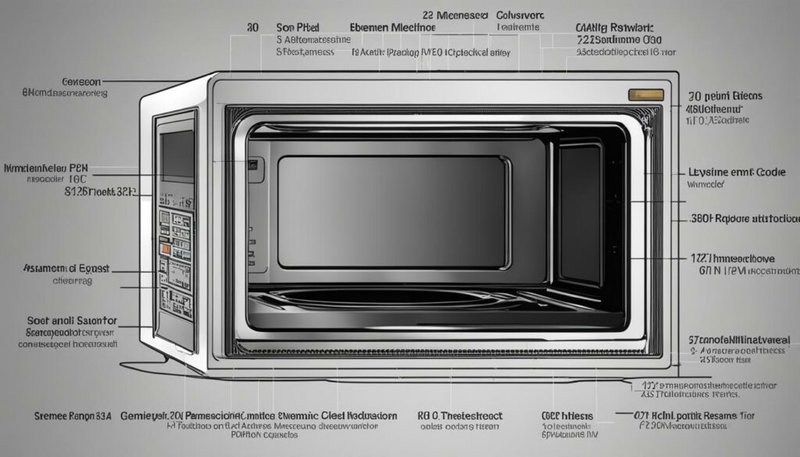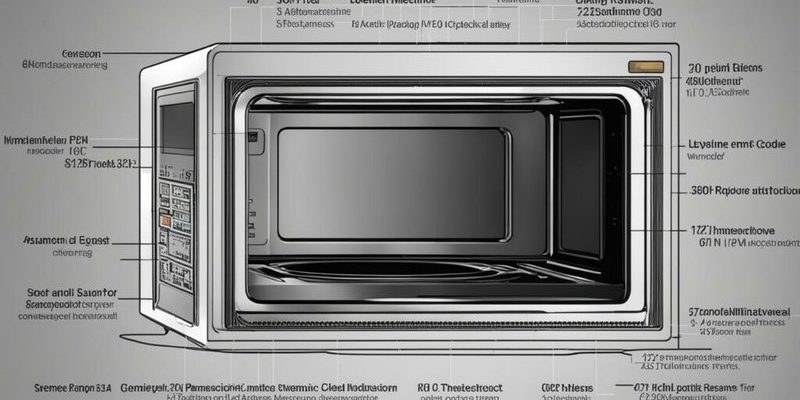
The OE error code is your microwave’s way of saying, “Hey, something’s not right here!” It’s a signal that there’s an issue with the unit’s operation, usually related to overheating or an obstruction. Think of it like a fire alarm going off when there’s smoke in the room. While it’s a bit alarming at first, it’s really just the microwave doing its part to keep things safe and sound. Once you understand the common causes of this error, you’ll be better equipped to address the problem and ensure your microwave gets back to doing what it does best.
Understanding the OE Error Code
When we talk about the OE error code, we’re discussing a specific type of alert designed to protect both the microwave and whatever’s cooking inside it. This code typically indicates overheating. In a nutshell, it’s like your microwave’s way of asking for a breather. This error code helps prevent any damage that could occur from excessive heat, which could disrupt its regular functions.
So, why would your microwave overheat in the first place? One common reason is blockages or obstructions in the vents. Just as a car engine needs unobstructed airflow to keep cool, your microwave also needs to be able to breathe. If something blocks the vents, the heat gets trapped, triggering the OE code. Another possibility is that the fan, which helps circulate air, might not be working properly, leading to heat accumulating inside the microwave.
Another scenario might involve the microwave being overworked. Yes, even machines need a break now and then! If you’re using the microwave continuously, back-to-back, it could overheat, resulting in the OE code. Think of it as your microwave saying, “Give me a minute, I’m exhausted!” Recognizing these instances allows you to take appropriate actions, such as cooling down the machine or checking for obstructions.
Common Causes of the OE Error Code
One of the primary culprits behind the OE error is the vent system. Microwaves use vents to expel heat and maintain their operating temperature. When these vents are blocked—perhaps by grime, dust, or even an improperly placed dish—the airflow is restricted. Imagine trying to blow air through a straw pinched in the middle; it’s a similar principle. Ensuring the vents are clean and unobstructed can often resolve this issue.
The fan motor is another potential source of the problem. The fan keeps cool air moving through the microwave, and if it’s faulty or unable to spin correctly, the temperature inside will climb rapidly. It’s a bit like turning off the ceiling fan on a hot day—things heat up quickly. If you suspect the fan is the problem, it might be time to consult a professional or consider a repair.
Lastly, what’s cooking inside could be contributing to the issue. Some foods, especially those with low moisture content, or containers not suitable for microwave use, can cause an increased risk of overheating. It’s akin to trying to toast bread with no moisture—it can quickly become too hot and set off alarms. Always check your manual or microwave-safe guides when heating particular dishes or utensils.
Steps to Resolve the OE Error Code
The first step to resolving the OE code is to turn off the microwave and allow it to cool. You wouldn’t keep jogging with a sprained ankle, right? The same logic applies here. Once it’s had time to cool, check for obstructions around the vents. Clear away any debris or misplaced items that might be blocking airflow.
Next, take a look at the fan. If you’re handy and the manual provides guidance, you might clean it yourself. However, if there’s any doubt, calling a professional is the best move. They can diagnose and fix mechanical issues safely and effectively—like taking your car to a trusted mechanic rather than attempting repairs without training.
If the error persists even after cleaning and checking the ventilation system, it may be time to look at what you’re cooking. Use microwave-safe containers and consider reducing the cooking time for specific items. Moisture-rich foods and appropriate containers help prevent excessive heat build-up.
Preventative Measures and Maintenance Tips
Prevention is truly better than cure. Keeping up with regular maintenance can help you avoid seeing the OE code ever again. Make it a habit to clean the microwave’s interior and exterior surfaces, including the vents, to keep it running smoothly. Just as you’d regularly clean out your fridge or oven, your microwave deserves the same attention.
Also, avoid using the microwave for consecutive long cooking cycles. Give it a break between use, especially if you notice it getting hot to the touch. Think of it as giving your stove-top a chance to cool down after making a pot of stew. Regularly inspecting not only the microwave but also power cords and outlets helps catch any wear and tear before it becomes a significant issue.
If you’re ever in doubt, reaching out to Panasonic customer support or a professional appliance repair person is always a wise choice. They can provide specific advice tailored to your model and situation, helping to keep your microwave in top-notch condition for years to come.
Incorporating these small, mindful practices into your routine can significantly extend the life of your microwave and keep it running efficiently—no error codes needed!
